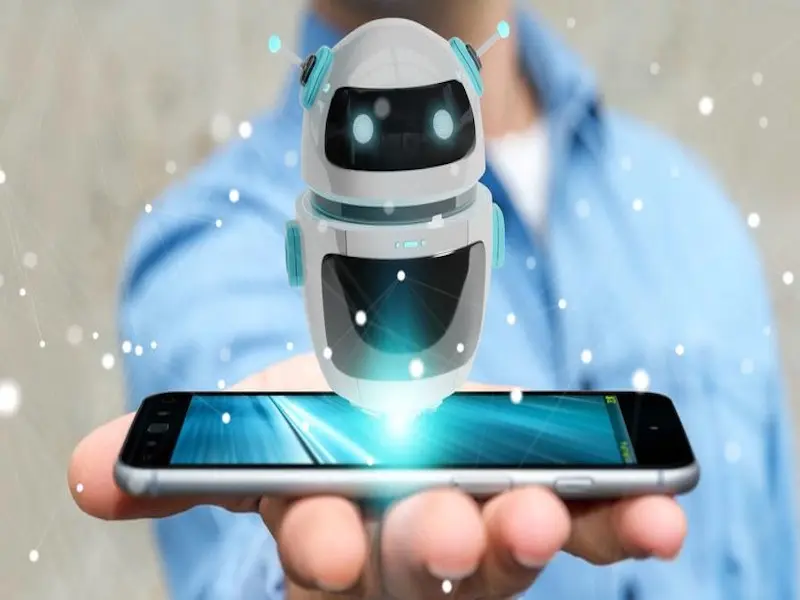- Both chatbots and virtual assistants are AI-driven tools designed to interact with users, but they serve different purposes and have varying levels of complexity.
- Chatbots typically handle specific tasks in a conversational format, often used for customer service, while virtual assistants can manage a wide array of personal and professional tasks.
- Virtual assistants usually incorporate advanced features like voice recognition and integration with various applications, making them more versatile than standard chatbots.
In the realm of artificial intelligence, both chatbots and virtual assistants play vital roles in enhancing user experience and automating tasks. However, the distinction between the two is often blurred, leading to confusion about their respective functions.
While both tools utilise natural language processing to communicate with users, they differ significantly in purpose, capabilities, and applications. In this blog, we will explore whether chatbots can be classified as virtual assistants, examining their functionalities, use cases, and technological nuances to clarify their roles in today’ s digital landscape.
Also read: What is neural network AI and what are the applications?
Also read: Exploring the potential and challenges of AI in developing countries
Defining chatbots and virtual assistants
Chatbots are AI programs specifically designed to simulate conversation with human users. They typically operate within messaging platforms or websites, responding to user inquiries using predefined scripts or machine learning algorithms. Their primary aim is to facilitate communication, answer questions, and provide information on a limited range of topics. For instance, a customer might interact with a chatbot to inquire about support issues, track orders, or gather product details. These bots excel at managing straightforward queries but may struggle with complex requests that require deeper understanding.
On the other hand, virtual assistants encompass a broader spectrum of functionalities. VAs are sophisticated AI systems capable of performing diverse tasks that go beyond basic conversation. They can assist users with scheduling appointments, sending emails, setting reminders, and even controlling smart home devices—often using voice commands. Examples include Google Assistant, Amazon Alexa, and Apple’s Siri. While they can engage in conversation, their design focuses on providing assistance and improving productivity in various aspects of daily life.
Use cases: Where they shine
The use cases for chatbots and virtual assistants illustrate their differences effectively. Chatbots are widely employed in customer service settings, where they can manage high volumes of inquiries simultaneously. Companies leverage chatbots to provide quick responses to common questions, thereby reducing wait times and enhancing customer satisfaction. For example, e-commerce businesses often implement chatbots to help customers navigate their websites or troubleshoot issues without needing human intervention.
Conversely, virtual assistants are utilised in personal and professional contexts to streamline workflows and enhance efficiency. A VA can manage calendars, send meeting invitations, and integrate with other applications like email and task management tools. This versatility allows users to delegate multiple tasks to a single assistant, simplifying their lives and maximising productivity.
Technological differences and capabilities
One of the critical distinctions between chatbots and virtual assistants lies in their technological capabilities. While both rely on natural language processing, virtual assistants typically employ more advanced algorithms and can understand context, tone, and intent more effectively. For instance, a virtual assistant can comprehend a request like “Schedule a meeting with John next Tuesday at 3 PM” and take appropriate action, whereas a chatbot may respond with predefined answers and struggle with nuanced queries.
Modern virtual assistants often integrate seamlessly with various applications and services, enabling them to perform multifaceted tasks. For example, a virtual assistant can connect to a user’s calendar, email, and smart home devices—all while executing voice commands. This level of integration allows for a hands-free experience that enhances user convenience.
The overlap
Despite their differences, it’s essential to acknowledge that there is some overlap between chatbots and virtual assistants. Many virtual assistants include chatbot-like functionality, providing users with a conversational interface to interact with various features. Similarly, some advanced chatbots are equipped with natural language processing capabilities that allow them to engage in more complex conversations.
However, the main takeaway is that while all virtual assistants can function as chatbots, not all chatbots qualify as virtual assistants. The depth of functionality, adaptability, and context-awareness are what ultimately differentiate the two.

